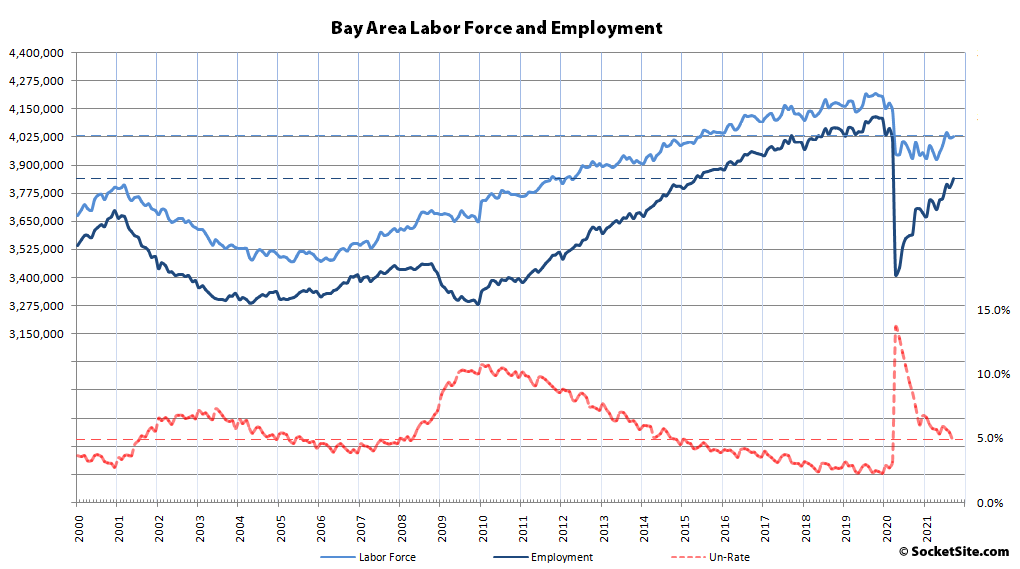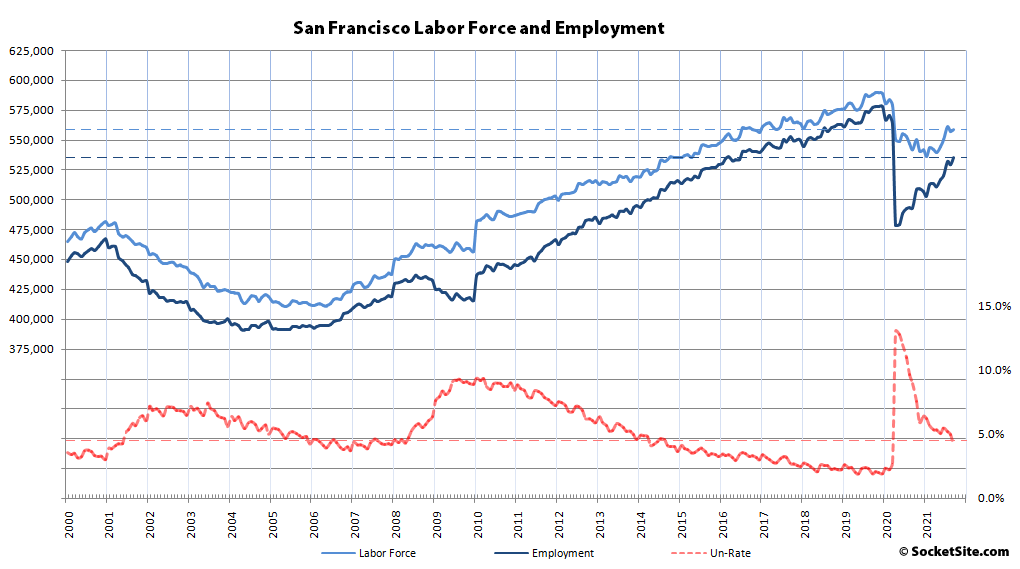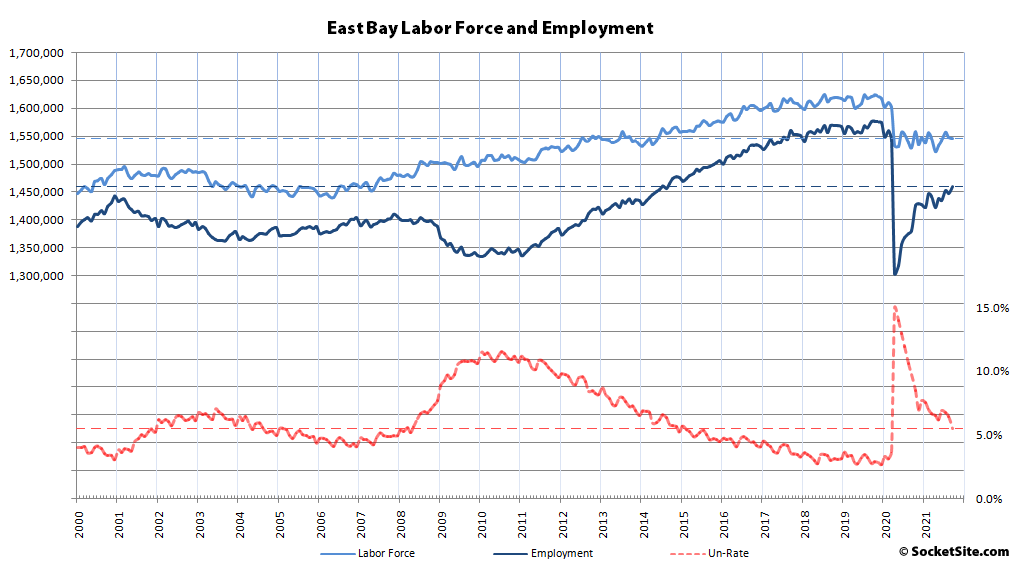Having slipped by (an upwardly revised) 2,400 in August, the number of people living in San Francisco with a paycheck increased by 6,300 in September to 535,700, dropping the unemployment rate to 4.1 percent with 42,500 more employed residents in the city than there were at the same time last year. That being said, there are still 35,000 fewer employed people in San Francisco than there were prior to the pandemic and 25,000 fewer people in the labor force.
At the same time, the number of East Bay residents with a paycheck increased by 12,600 last month to 1,460,300, which equates to 79,400 more employed residents than there were at the same time last year but still 99,000 fewer than there were prior to the pandemic, and 64,400 fewer people in the labor force, for an unemployment rate of 5.5 percent.
Employment in both San Mateo and Santa Clara ticked up last month as well, by 5,000 and 11,300 respectively. And as such, while there are now 94,200 more employed people in the Valley (1,409,400) than there were at the same time last year, there are still 68,700 fewer employed people than there were prior to the pandemic, with 48,100 fewer people in the labor force (1,466,500) for an unemployment rate of 3.9 percent.
Total employment across Marin, Napa and Sonoma ticked up by 4,800 in September to 435,500, representing 31,700 more employed residents than at the same time last year. But there are still 18,000 fewer employed North Bay residents than there were prior to the pandemic with 11,600 fewer people in the combined labor force (454,800) for an average unemployment rate of 4.2 percent.
And as such, while nearly 430,000 jobs have been recovered across the Bay Area since the pandemic hit, including 40,000 last month, and there are 247,800 more employed residents than there were at the same time last year, there are still 221,100 fewer employed Bay Area residents (3,840,900) than there were prior to the pandemic having hit (4,062,100) and the labor force is down by 149,200, for an unemployment rate of 4.6 percent versus 2.3 percent at the end of 2019.


